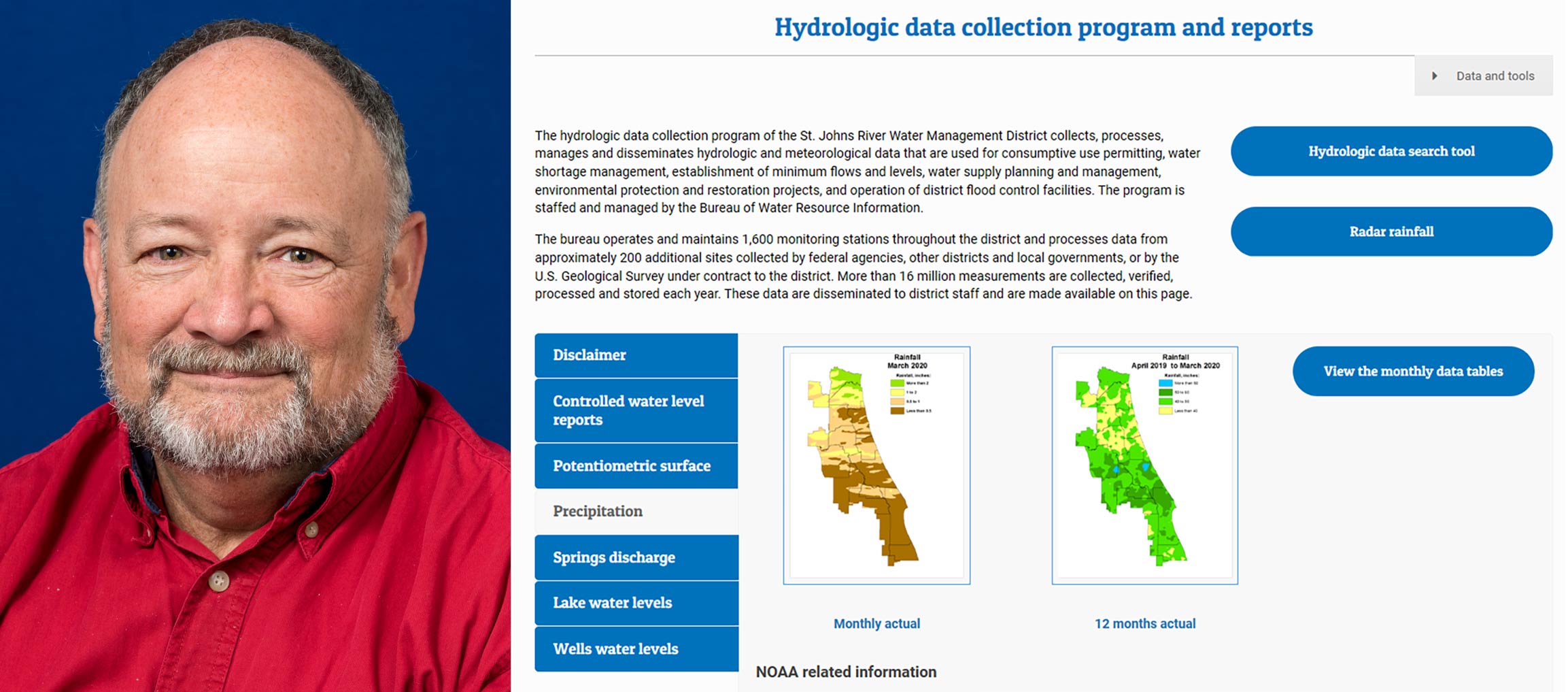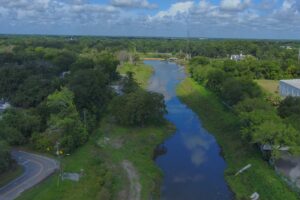H2O Heroes
A glimpse behind the scenes at district’s water shortage team

Kraig McLane, district Water Shortage team leader, is among staff keeping an eye on the region’s water supply
Florida receives an average of 52 inches of rain annually, but it doesn’t fall uniformly across the state. Long periods of dry weather can cause a decline in groundwater levels, the source of 90 percent of water used by people living in the St. Johns River Water Management District’s (SJRWMD) 18-county region.
Extended dry periods can lead to droughts, which may prompt any of the state’s five water management districts to consider issuing water shortage orders. How is this decision reached? At SJRWMD this responsibility lies with the district’s Water Shortage Team.
When rains aren’t falling and groundwater levels recede, the Water Shortage Team ramps up its activities, analyzing data and studying forecasts so that it can provide the district’s Governing Board with the most responsible and science-based recommendation on issuing a water shortage order.
“As conditions become drier, we call our group together to review detailed hydrologic data, including rainfall and groundwater indicators,” says Kraig McLane, Water Shortage team leader. “Our team is diverse, with experts representing most of our divisions and bureaus.”
To capture the most robust view of what is happening throughout the region, team members share not only data, but what they’re hearing from communities. Environmental Resource Program Coordinator Allen Baggett and Hydrologist Emily Delozier offer updates about problems water utility plants might be experiencing. David McInnes, an environmental resource coordinator in the district’s Bureau of Water Supply Planning, works closely with the agricultural community. He reports whether growers are noticing that the water levels in their irrigation wells are dropping. If an area of the district is reporting an unusual number of complaints about wells, Hydrologist Wesley Curtis will share what he’s hearing and what his investigation has found.
Our team is diverse, with experts representing most of our divisions and bureaus.
When it comes to hard numbers, the team relies on Michael Daly, a Water Resource Data Manager in the district’s Bureau of Water Resource Information. Daly is the guru who develops color-coded maps that highlight everything from groundwater to rainfall patterns throughout the district.
The five water management district’s keep in touch with one another so that they’re armed with the most accurate statewide picture of hydrologic trends and each district’s response. All the while, the team must follow the provisions in its adopted water shortage plan.
“We also review other factors,” McLane says. “If our data indicates that we should recommend a moderate water shortage order, but the U.S. Climate Center predicts that we are entering a rainy season, we might delay recommending an order for two to four weeks.”
Another twist: Rainfall and water levels can vary greatly from county to county. “Some areas might experience a little more intense drought conditions than others,” McLane says. “In these areas, we can recommend water shortage orders for one or more counties. An order doesn’t have to be for the entire district area.”
Should drought conditions reach the required indicators in the water shortage plan, the team will recommend that the Governing Board issue a water shortage order. There are four levels of water shortages, with water use restrictions increasing in relation to the intensity of the drought.
“At that point, we work closely with our Communications team to raise public awareness of a water shortage order and the need to use water wisely,” McLane says. “We do that by sharing our message with the media and using every outreach tool available – social media posts, videos and our website.”
The Water Shortage Team keeps its thumb on the pulse of the district’s water resources during times of both ebb and flow, its members working quietly behind the scenes on the management of the state’s most precious resource during times of extremes.





